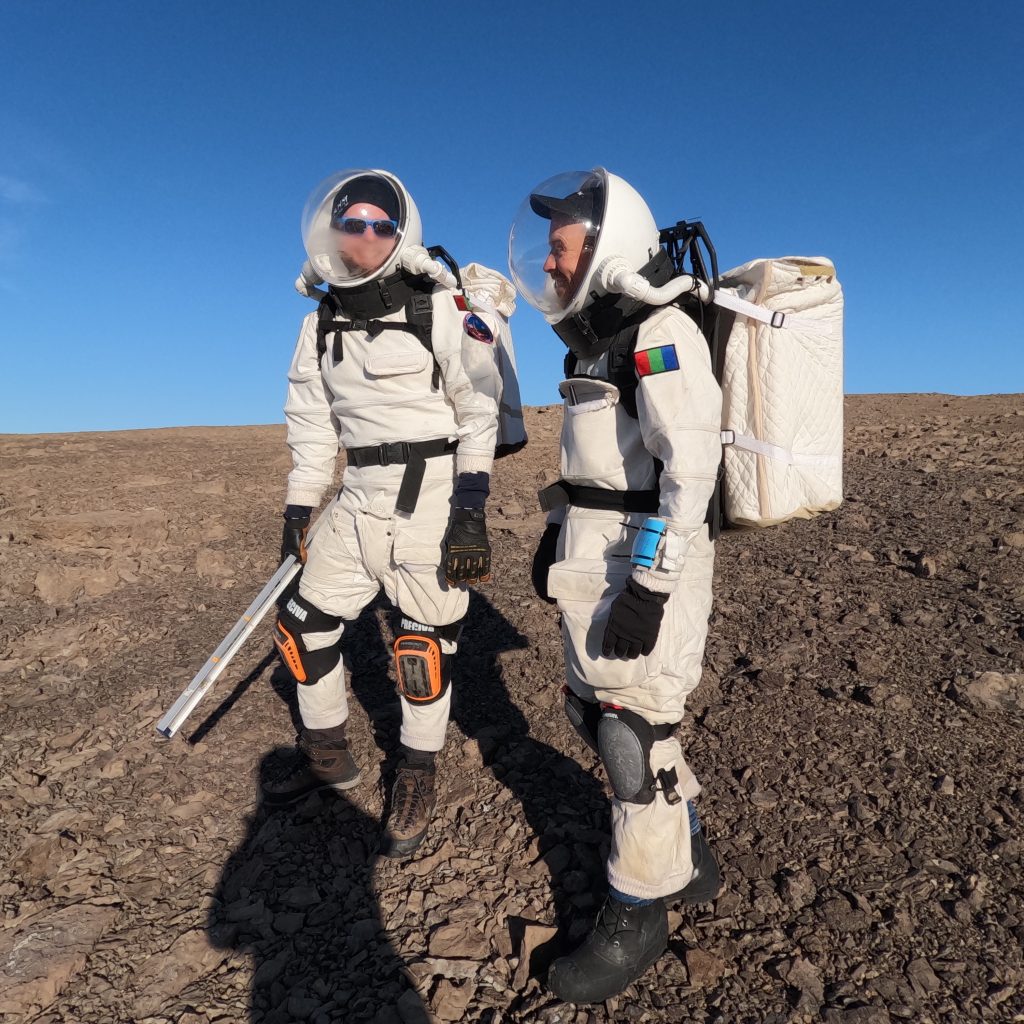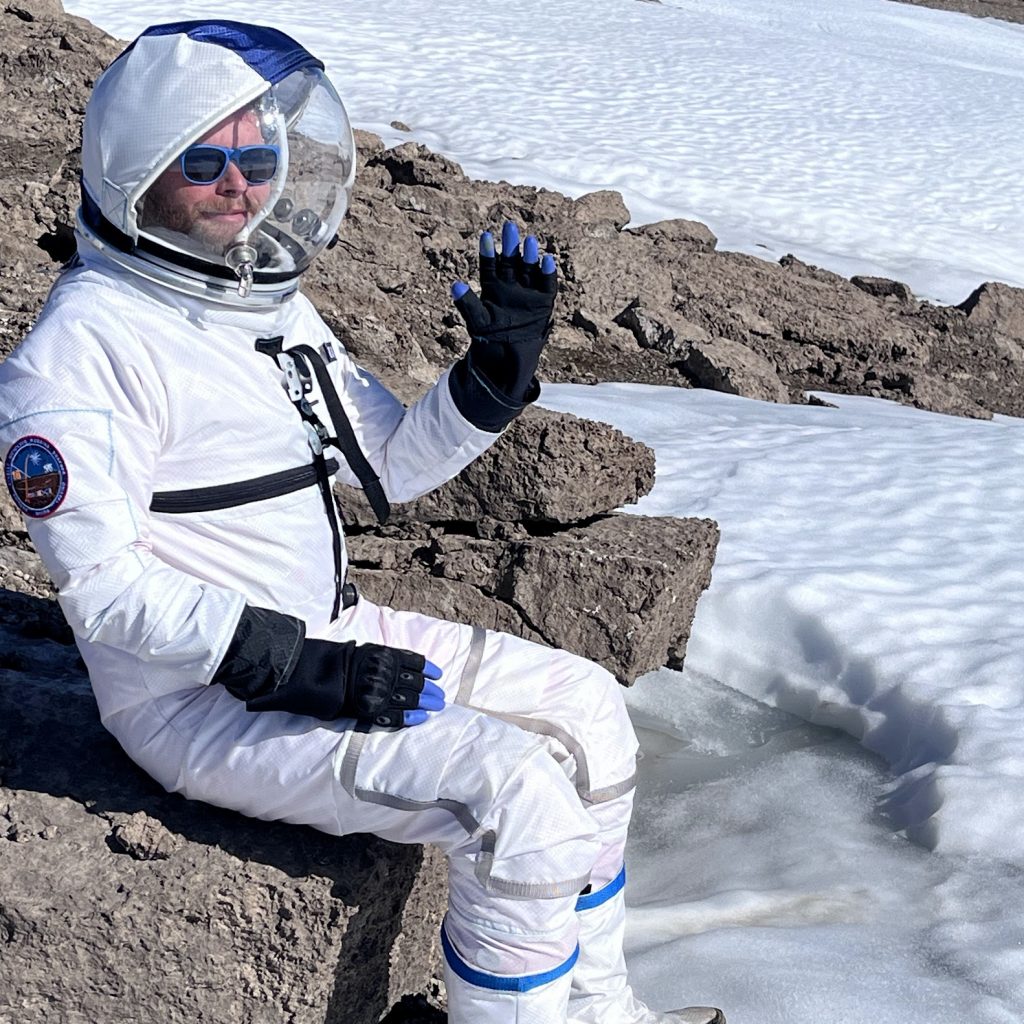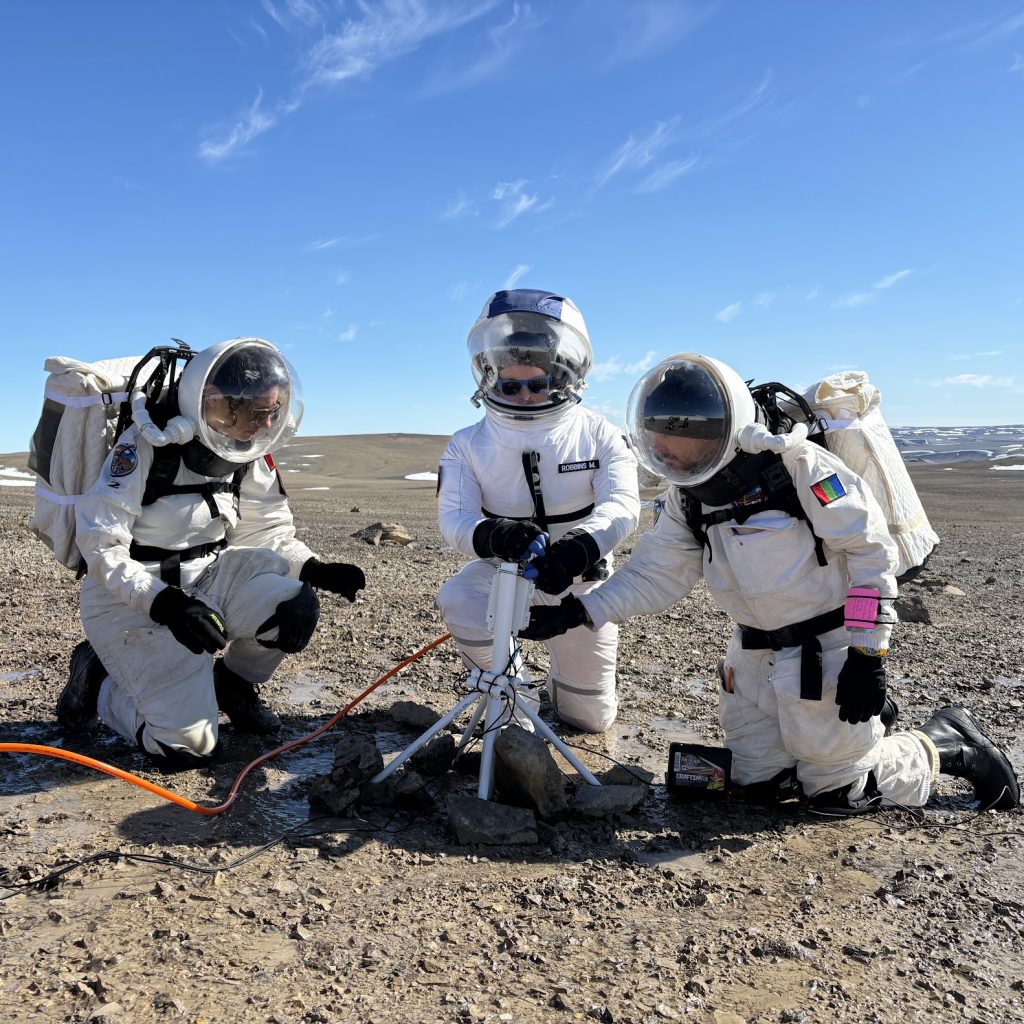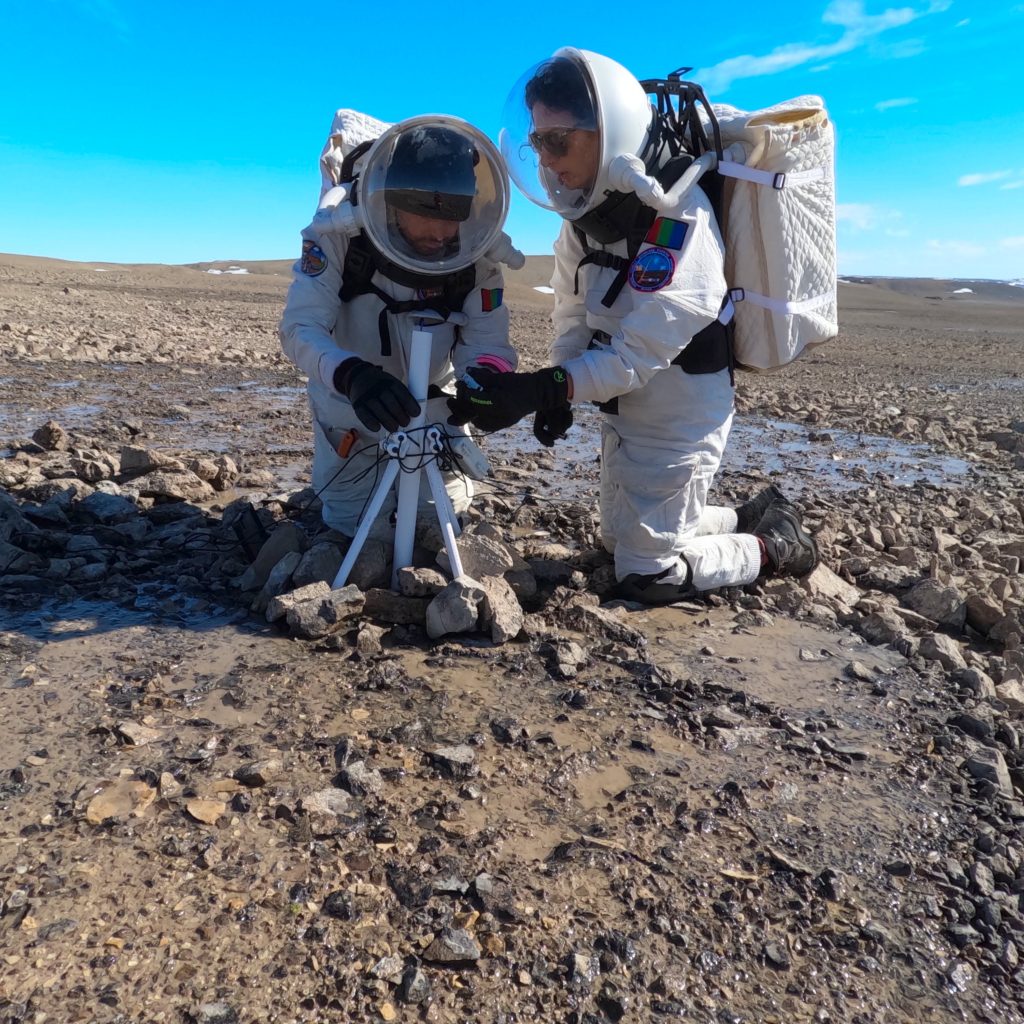FLASHLINE-16 Daily Report 08-07-2024
Author: Michael Andrews – Crew Logistics
The MARS-16 crew really hit their stride today! We had the following objectives on our second true day of simulation:
- Extract the data loggers via EVA
- Test Crew Engineer Robbins’s experimental suit
- Perform high priority engineering actions
- Determine radio telescope locations via EVA
This morning, we had a simple breakfast of cereal, dehydrated fruit, and powdered milk. The crew came to an agreement that during simulation, it’s best to stick to minimal prep meals like this and camping meals in order to maximize time during simulation. Within an hour we were in the space suit room gearing up.
I was extremely excited to go on my first EVA today. A lot of the suit donning procedures and mission pre-brief chat was similar to what I’ve experienced on scuba dives. The suit is unexpectedly light and comfortable when properly secured, and the ventilation system keeps the interior cool. Like a diving mask, the helmet often fogs up, so we applied soapy water to the interior of the helmet with great results.
Our objective on the first EVA of the day was to extract the data loggers deployed on the rim of the Haughton crater. They are a series of three devices on PVC stands that measure the temperature and humidity of the soil. By comparing this data with weather patterns and satellite imagery, researchers can determine how the soil reacts to rain and snowmelt over time. For more information about the study and its results, I’d recommend reaching out to Dr. Paul Knightly of the University of Arkansas.
As we (Cinelli, Robbins, and I) waited in the airlock for our 5-minute depressurization, it was a good time to get into proper perspective for the simulation. Outside of the station’s hatch is a Martian terrain that is beautiful but hostile to human life. We have a limited amount of battery life on our ventilation packs, simulating a finite amount of air reserves on Mars. The ventilation drowns out ambient sounds, simulating a low-pressure atmosphere. Although Nicholson and Swarmer served as bear watchers, they would be invisible to us – we were on our own. We received the notification that our 5 minutes had transpired, and I opened the hatch.
The EVA experience was something that I had been looking forward to for the last 10 days of traveling and maintenance, and it was absolutely worth the hype. The analog experience that the Mars Society has set up at Devon Island is the real deal. The terrain, the suits, the team dynamics, the communication constraints, and the mission objectives all contributed to a true Martian simulation. I’ve provided more details in my EVA report for how the mission went, but in short: we were able to successfully extract all data loggers and test out the functionality of Robbins’s experimental training suit.
After a quick removal of gear and lunch, we tackled some much-needed engineering tasks. They’re concisely summarized below:
- Gray Water Reservoir: with a larger crew than last year, we realized we were accumulating more gray water from our dishwashing and personal hygiene than our regular container could hold. In previous years, the container would fill up during the mission and evaporate over the winter, leaving any non-water particulates in the container. However, we needed an alternate solution. I had found a disassembled wheelbarrow underneath the hab and fashioned it into an extra reservoir. HSO Swarmer used it to displace a lot of gray water and solve our issue for this mission. The conversation would have to continue next year on how to dispose of water in case it doesn’t evaporate.
- ATV Repair: the work on our quads continues! One of our olive Arctic Cats would not start on EVA, and we were able to restore it with a simple fuse swap. Another olive ATV needed a battery to be charged, and that restores us to 4 operational vehicles.
- Generator Repair: Robbins, Cinelli, and I worked on multiple generators in the afternoon. Yellow Submarine (our new generator) has been working properly, but Gen A (“Jenny”) had stopped working yesterday. We suspected a dirty air filter, and our suspicions were accurate – it had not been replaced since 2009! We swapped it out and replaced its oil, and Jenny was back online. We then focused on Gen B, which required more work. The air filter was inspected and didn’t require replacement, the oil was changed, and we replaced a cracked fuel line. Gen B still wouldn’t start, so we are charging the battery to continue work tomorrow.
- Mold Cleanup: Commander Cinelli did some more extensive mold cleaning on the second and first floors in hard-to-reach areas, since many of the crew members were working engineering projects. It is continuing to look better and better! It’s also important to note here that 3 of our crew members are experiencing congestion, which we believe to be due to the relatively high humidity of the habitat and potential mold exposure. This should help ameliorate these symptoms for the rest of our time here.
As we began to wrap up these tasks, I realized just how close to the end of our mission we were. If we did two EVAs a day, that meant we only had three true EVAs left! Therefore, I gathered a small crew of Robbins and Swarmer to perform a small but meaningful mission before dinner.
Robbins led us on this second EVA to determine ideal locations to install a radio telescope near the habitat on future missions. The Mars Society has considered erecting a telescope here to detect radio waves from celestial objects, which is a larger wavelength spectrum than offered by the visible light spectrum. It was a unique experience to survey the land and record data in the field (e.g. coordinates, area, and photography). We also got experience traversing in snow, soil, and rock scrambles. It was also the first EVA where we had crew members in the habitat communicating with the EVA team via radio, asking for occasional mission updates. You can also learn more about our results in the corresponding EVA report.
I know I speak for the whole crew when I say we were utterly exhausted after double EVAs. After a few camping dinners and expedition reports, it was time for bed. The crew is ready to finish strong on our last simulation day tomorrow!






